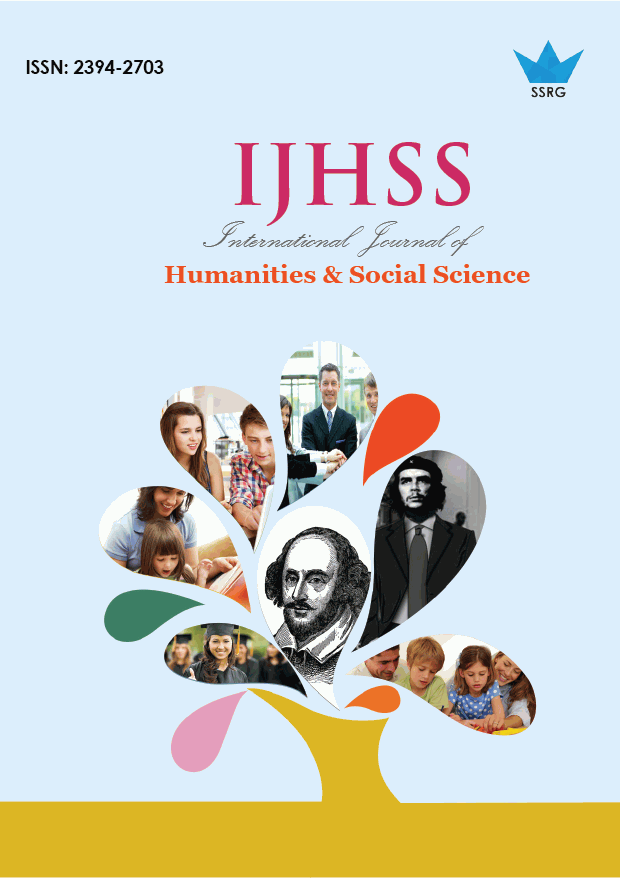The Impact of Social Framing in Digital Fundraising Campaigns on Donation Behaviour

| International Journal of Humanities and Social Science |
| © 2025 by SSRG - IJHSS Journal |
| Volume 12 Issue 6 |
| Year of Publication : 2025 |
| Authors : Aarushi Karnawat |
How to Cite?
Aarushi Karnawat, "The Impact of Social Framing in Digital Fundraising Campaigns on Donation Behaviour," SSRG International Journal of Humanities and Social Science, vol. 12, no. 6, pp. 1-8, 2025. Crossref, https://doi.org/10.14445/23942703/IJHSS-V12I6P101
Abstract:
Online crowdfunding has become an important tool to raise funds for various causes. The success of these campaigns, however, depends on how the campaigns for donations are framed and whether they can create a sense of trust and evoke emotions in potential donors. This study aims to look at the social framing of the online donation campaigns and how this framing affects the willingness of people to donate, and compare emotional and trust-based appeals, and also analyse the donation behaviour of donors. This paper used a quantitative analysis of the data collected by 36 respondents, and the participants were given two campaigns based in India and two in the U.K. They were analysed on a 5-point Likert scale, across three dimensions: trust, emotional impact, and persuasiveness. Along with this, the Helping Attitudes Scale (HAS) was used to measure prosocial orientation. There was more motivation towards donating to the campaign in the U.K., whereby credibility and transparency were the motivating factors, rather than emotional appeal. These results suggest that donations are driven by trust as well, not just empathy. Nonprofit organisations can benefit when they emphasise accountability and show tangible results to their potential donors to build trust.
Keywords:
Social Framing, Digital Campaigns, Fundraising, Consumer Behaviour, Crowdfunding.
References:
[1] Lekha D. Bhat et al., “Medical Crowdfunding in India: The Need for a Strong Legal Enforcement System,” Indian Journal of Public Health, vol. 68, no. 3, pp. 441–443, 2024.
[CrossRef] [Google Scholar] [Publisher Link]
[2] Ivo Bischoff, and Thomas Krauskopf, “Warm Glow of Giving Collectively – An Experimental Study,” Journal of Economic Psychology, vol. 51, pp. 210–218, 2015.
[CrossRef] [Google Scholar] [Publisher Link]
[3] Yingying Cai et al., “Health Inequities in Medical Crowdfunding: A Systematic Review,” International Journal for Equity in Health, vol. 24, 2025.
[CrossRef] [Google Scholar] [Publisher Link]
[4] Karuna Chandra et al., “Ketto and the Science of Giving: A Data-driven Investigation of Crowdfunding for India,” ArXiv: 2509.12616, 2025.
[CrossRef] [Google Scholar] [Publisher Link]
[5] Sara Konrath, and Femida Handy, “The Development and Validation of the Motives to Donate Scale,” Nonprofit and Voluntary Sector Quarterly, vol. 47, no. 2, pp. 347-375, 2017.
[CrossRef] [Google Scholar] [Publisher Link]
[6] Henry K. Dambanemuya, and Emoke-Agnes Horvát, “A Multi-platform Study of Crowd Signals Associated with Successful Online Fundraising,” Proceedings of the ACM on Human-Computer Interaction, vol. 5, pp. 1-19, 2021.
[CrossRef] [Google Scholar] [Publisher Link]
[7] Gabriella Dóci, and Eleftheria Vasileiadou, ““Let’s do it Ourselves” Individual Motivations for Investing in Renewables at Community Level,” Renewable and Sustainable Energy Reviews, vol. 49, pp. 41–50, 2015.
[CrossRef] [Google Scholar] [Publisher Link]
[8] Robert M. Entman, “Framing: Toward Clarification of a Fractured Paradigm,” Journal of Communication, vol. 43, no. 4, pp. 51–58, 1993.
[CrossRef] [Publisher Link]
[9] NICVA, Focus on a Funder: The Big Give and Match Funding, 2024. [Online]. Available: https://www.nicva.org/article/focus-on-a funder-the-big-give-and-match-funding
[10] G. Nickell, “Helping Attitudes Scale,” 106th Annual Convention of the American Psychological Association at San Francisco, 1998.
[Google Scholar] [Publisher Link]
[11] Marie Hladká, and Vladimir Hyánek, “Motives for Donating: What Inspires our Decisions to Make a Donation to Non-Profit Organisations,” Review of Economic Perspectives, vol. 15, no. 4, pp. 357–382, 2015.
[CrossRef] [Google Scholar] [Publisher Link]
[12] Md. Mukitul Hoque, “Crowdfunding for Innovation: A Comprehensive Empirical Review,” Future Business Journal, vol. 10, 2024.
[CrossRef] [Google Scholar] [Publisher Link]
[13] Dr. Hetal Jhaveri, and Anjali Choksi, “Crowdfunding at India: A Study of Indian Online Crowdfunding Platforms,” Cell, vol. 91, 2014.
[Google Scholar] [Publisher Link]
[14] Claudia Keser, Hartmut Kliemt, and Maximilian Späth, “Charitable Giving: The Role of Framing and Information,” PLOS ONE, vol. 18, no. 7, 2023.
[CrossRef] [Google Scholar] [Publisher Link]
[15] Ketto Campaign, Save A Child Every Month, [Online]. Available: https://www.ketto.org/crowdfunding/fundraisers
[16] Eun Young Lee, and Kyounghee Chu, “The Effect of Partitioned Framing vs. All-inclusive Framing of Donation Amount on Prosocial Behavior: Focus on the Moderation Effect of Psychological Characteristics,” Frontiers in Psychology, vol. 14, 2023.
[CrossRef] [Google Scholar] [Publisher Link]
[17] Yulong Liu et al., “Leveraging Digital Crowdfunding Platforms for SME Sustainability in Emerging Markets: The Roles of Entrepreneurial Competency, Social Capital, and Supply Chain Trust,” Technovation, vol. 147, 2025.
[CrossRef] [Google Scholar] [Publisher Link]
[18] Rudi Palmieri, Chiara Mercuri, and Sabrina Mazzali-Lurati, “Persuasive Reasons in Crowdfunding Campaigns: Comparing Argumentative Strategies in Successful and Unsuccessful Projects on Kickstarter,” International Journal of Strategic Communication, vol. 16, no. 2, pp. 332–355, 2022.
[CrossRef] [Publisher Link]
[19] Adrian Sargeant, and Stephen Lee, “Donor Trust and Relationship Commitment in the U.K. Charity Sector: The Impact on Behavior,” Nonprofit and Voluntary Sector Quarterly, vol. 33, no. 2, pp. 185–202, 2004.
[CrossRef] [Google Scholar] [Publisher Link]
[20] Consultation Paper on Crowdfunding in India. [Online]. Available: https://www.sebi.gov.in/sebi_data/attachdocs/1403005615257.pdf
[21] Jen Shang, and Rachel Croson, “A Field Experiment in Charitable Contribution: The Impact of Social Information on the Voluntary Provision of Public Goods,” The Economic Journal, vol. 117, no. 540, pp. 1422–1439, 2009.
[CrossRef] [Google Scholar] [Publisher Link]
[22] Janathan Sitruk et al., “Emotional Brightness and Crowdfunding Performance,” Research Policy, vol. 54, no. 1, 2025.
[CrossRef] [Google Scholar] [Publisher Link]
[23] Manraj Singh Sra, “Patterns of Online Medical Crowdfunding in India,” JAMA Network Open, vol. 8, no. 1, 2025.
[CrossRef] [Google Scholar] [Publisher Link]
[24] The Big Give (UK Campaigns). [Online]. Available: https://donate.biggive.org/explore?category=Education%2FTraining%2FEmployment&sortField=amountRaised
[25] “The Big Give Trust Charity Number: 1136547,” Report of the Trustees and Financial Statements, Charity Commission for England and Wales, pp. 1-35, 2024.
[Publisher Link]

 10.14445/23942703/IJHSS-V12I6P101
10.14445/23942703/IJHSS-V12I6P101